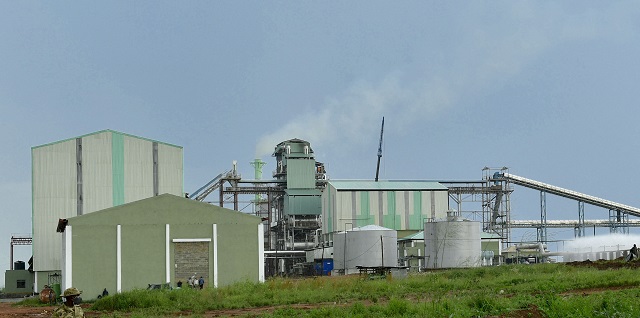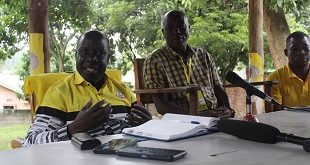
Gulu, Uganda | THE INDEPENDENT | A section of legislators from the Acholi sub-region have cautioned the government against providing further funding to Atiak Sugar Factory in Atiak sub county, Amuru district. This comes in the wake of the temporary closure of the sugar factory, barely two years after it commenced production of sugar for export and domestic consumption.
Atiak Sugar factory owned by Horyal Investment Holding company Ltd with 56 percent share and the government with 44 percent shares temporarily closed down its operation in May this year over a shortage of sugarcanes.
But legislators from the region say the closure of the factory came barely six months after the government had allocated Shillings 108 billion in a supplementary budget to finance its operation.
Philip Polly Okin Ojara, the Chua West legislator told journalists at a press briefing on Monday in Gulu city that it was unwise for the government to keep injecting money into a venture that is not bringing in any returns. He says that the purpose of the factory was to help out-growers in the region prosper but since it commenced production, out growers, the majority of whom are former Lord’s Resistance Army abductees haven’t been paid their money for growing sugarcane.
Okin says the government should stop funding the factory until the investor, with the largest share shows proof of how much they have invested without relying on the 44 percent shares of the government.
According to Okin, the government has so far injected over Shillings 300billion into the factory but little is visible in terms of its impact on the community of Northern Uganda.
For instance in 2017, the government injected Shillings 62 billion into the factory followed by another Shillings 20 billion in May 2018 in which it acquired 10 percent shares. In July 2018, the government added another Shillings 45 billion raising their shareholding to 32 percent. In 2019, the government injected another 24 billion Shillings followed by a supplementary budget of Shillings 108 billion which was approved in November last year.
Hundreds of out-growers in the region majority of whom are former Lord’s Resistance Army abductees from Amuru and Lamwo districts have also raised complaints of non-payment for labor they provided in growing sugarcane.
The affected out growers say whereas they had been promised payments after the sale of sugarcanes for five years, three years have now passed without getting a single coin from the government. Rose Mary Acan, one of the members of Atiak Sugarcane out growers’ association alleges that the government owes her Shillings 60 million for the labor she provided on the sugar plantation between 2018 and 2021. Achan, who is HIV positive, says that the sugarcane they planted as a group was sold three times, but no payment was handed to them.
Olga Acayo, another aggrieved farmer also accuses the government of selective payment of out growers who participated in growing sugarcane for the Atiak Sugar factory. She says a number of times they have been tossed on the matter with no success yet registered. A total of 3,200 former LRA abductees who were chosen as out growers in the Lamwo and Amuru districts are yet to receive their payments from the government.
1,200 of the out growers are from Amuru and Nwoya districts, 400 from Lamwo, and 1,600 from Gulu and Omoro districts. Gilbert Olanya, Kilak South legislator says that they are demanding that the government expedites the payment of the war victims who have offered labor since the establishment of the factory.
Olanya notes that they have also established that many people who aren’t victims of the war have been paid while the rightful beneficiaries are still waiting to get their payment.
Hamilton Jackson Ogwang, the National Agricultural Advisory Services (Naads) Zonal Agricultural Development Officer in charge of Atiak acknowledges the delayed payments to some of the out growers. He however notes that the successive fire incidents and underutilization of the available land meant for sugarcane growing left other out growers unable to benefit from proceeds of sugarcane sales.
For instance, in Atiak sub-county, out of the 13,481 acres of land to be developed, only 7,906 were used for growing sugarcane while in Lamwo, only 4,994 acres were used. Dr. Amina Hersi Moghe, the Chief Executive Officer of Horyal Investments Holding Company Ltd, the entity behind Atiak Sugar Factory told URN in an earlier interview that the shortage of raw materials was impeding the operations of the factory.
*****
URN
 The Independent Uganda: You get the Truth we Pay the Price
The Independent Uganda: You get the Truth we Pay the Price



